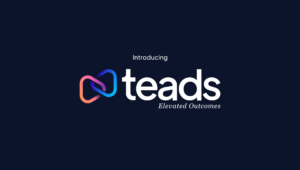Why Ad Exchanges Can Also Be Successful For Brand Advertising
by Ciaran O'Kane on 14th Jan 2010 in News
Paul Silver (@thebigsilv) is Digital Direct Response Manager at MEC Manchester.
Today’s data driven digital advertising no longer has the same rigid distinctions of old between response and brand. The DNA of both of these forms of advertising has begun to intertwine to form some super hybrid strain of advertising with ways to deliver content to the right audience at the right time to yield a response. It has begun to make response sexier and brand more efficient. Who would have thought? For the purpose of this post however I do deliberately make the distinction between brand and response. Campaigns are still bought on these metrics and there are many advertisers who would still fall into one of these forms of advertising.
This blurring of the lines between brand and response has been radicalised by the proliferation of companies now involved in this new era of digital advertising and media. Ad exchanges and the DSP space more generally have paved the way for response-driven advertisers to increase their buying efficiencies and performance. Spot buying impressions in real-time against specific target segments with dynamically served ads – and all underpinned by machine learning or computational algorithms. This of course appeals to the DR community. But what about advertisers that are not focussed on an immediate direct response?
Ad exchanges and DSPs have enabled more brand focussed advertisers to become more advanced in the way they buy media and which offers them a safer haven for buying targeted audiences as opposed to just content and context.
Take the example of a female based FMCG product. Brand-led campaigns traditionally might have evolved around female based portals and ‘premium’ destinations like I-village and Handbag. Natural instinct led us down that road for obvious reasons: that is where the audience was and the advertiser knew their ads would appear in front of those audiences on those sites.
There is of course still a role for these sites to play in brand focussed campaigns (developing creative integrations and partnerships is something that cannot be traded across second channel markets) but with regards to simply putting ads in front of these audiences, there are more creative ways of doing this which will give the advertiser a much stronger return for their investment. I know that social media is playing a much larger role for the FMCG’s out there but display advertising still has a role for these advertisers and whether the advertiser is brand or response, advertisers want value for money. Period.
Outlined below is a small list of examples of how the DSP space is facilitating brand advertisers to invest more in buying audience rather than context:
Brand Safety / Transparency
Brand advertisers have always placed a certain level of priority as to where the ad is seen, in what environment and against what context. Technological advancements within ad exchanges and the associated trading platforms can offer advertisers the transparency that they have craved. Speaking from experience, brand advertisers have always bought into the idea of blind ad networks but I believe it was the lack of transparency into knowing where their ad was running and when that has prevented more media budget being invested into this online route to market. If a brand advertiser was buying TV, they would know the spot times and channels of when their ad was being aired. If we can start delivering information to advertisers, in real time, about where their ad has appeared, what creative was served, how much was paid for the ad, I bet it would not be long before money shifted into this channel.
Targeting
A major advancement (particularly in the US) has been the evolution of data exchanges and data aggregators. Being able to buy cookie data in the same way you buy media space has completely revolutionised the way more relevant ads are delivered. A possible preconception a brand advertiser may have is that anything but a site specific buy will lead to audience wastage and irrelevancy. Wrong. Advancements in data trading mean that cookies can be traded and bought across different exchanges, providing you are buying the right cookies, it does not get much more targeted than that! The UK / Euro market has been slower to adopt this way of buying data due largely to different privacy laws across the EU. Time will tell if the likes of Exelate are able to operate successfully in this market.
Universal Frequency Capping
A requisite of brand campaigns is reaching your target audience and the more of that audience you reach, the better. This is the premise of most offline brand focussed campaigns: what is the reach? Universal frequency capping is an area where a brand advertiser can really leverage the capabilities of a DSP. Even if buying across multiple points, advertisers can ensure that a frequency of 3 per user per day, really is 3 per ‘user’ per day. If buying across separate ad networks and sites, the frequency cap will be applied per vendor. Knowing that most of the inventory on networks is duplicated and non exclusive, the efficiencies saved from universal frequency capping alone justifies the investment in this space!
Buying
Regardless of whether the metric is engagement and interaction or a direct purchase, advertisers want to do it cheaper and why not? This is why ad exchanges and their benefit of buying media on an auction model are just as relevant and suitable for brand as well as DR. If you can buy your target audience in a more transparent fashion, with advanced optimisation, creative delivery and targeting opportunities WITH increased cost efficiencies, it really is a no brainer for ALL advertisers, not just those who are judged on immediate ROI. Streamlining the buying process also enables agencies to better service their clients and free up more resource to think up the next ‘media first’.
Optimisation
Optimise what? This is a brand campaign, surely you do not optimise? Putting facetiousness aside, the ability to optimise is vastly improved within these tech driven platforms of buying. It is called Demand Side Platform for a reason. Buyers are empowered to improve efficiencies on their terms. Of course when it comes to optimisation there needs to be something you are trying to achieve, an end game if you will. Optimising to a CTR is not really the most efficient way to optimise a brand focussed campaign.
Advancements in display based analytical companies enable advertisers to optimise against more brand based metrics: interaction rates, ad placement, ad viewership and so on. Even if the advertiser wanted to optimise on more ‘hard’ metrics, they are far more equipped to do so within a DSP than letting an ad network optimise simply to a CTR (where increasing their own yield plays a larger role in the optimisation decisions).
I am not teaching anything new to those working within this space. But what it hopefully does is get any European or UK brand managers out there buying into the idea that there are more efficient ways to reach your target audience online.
Ad NetworkAgencyDisplayDSPExchangeProgrammaticTrading








Follow ExchangeWire